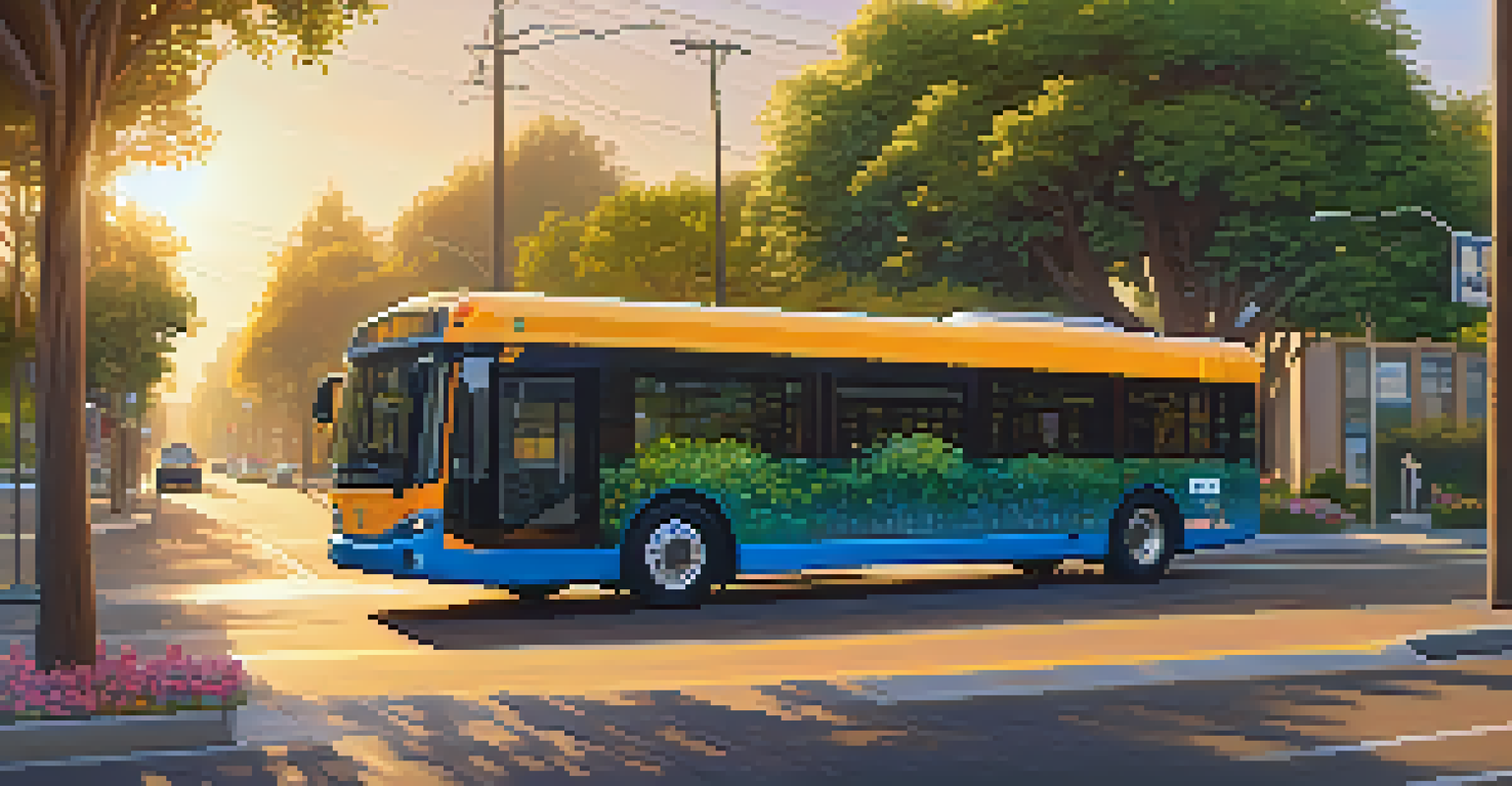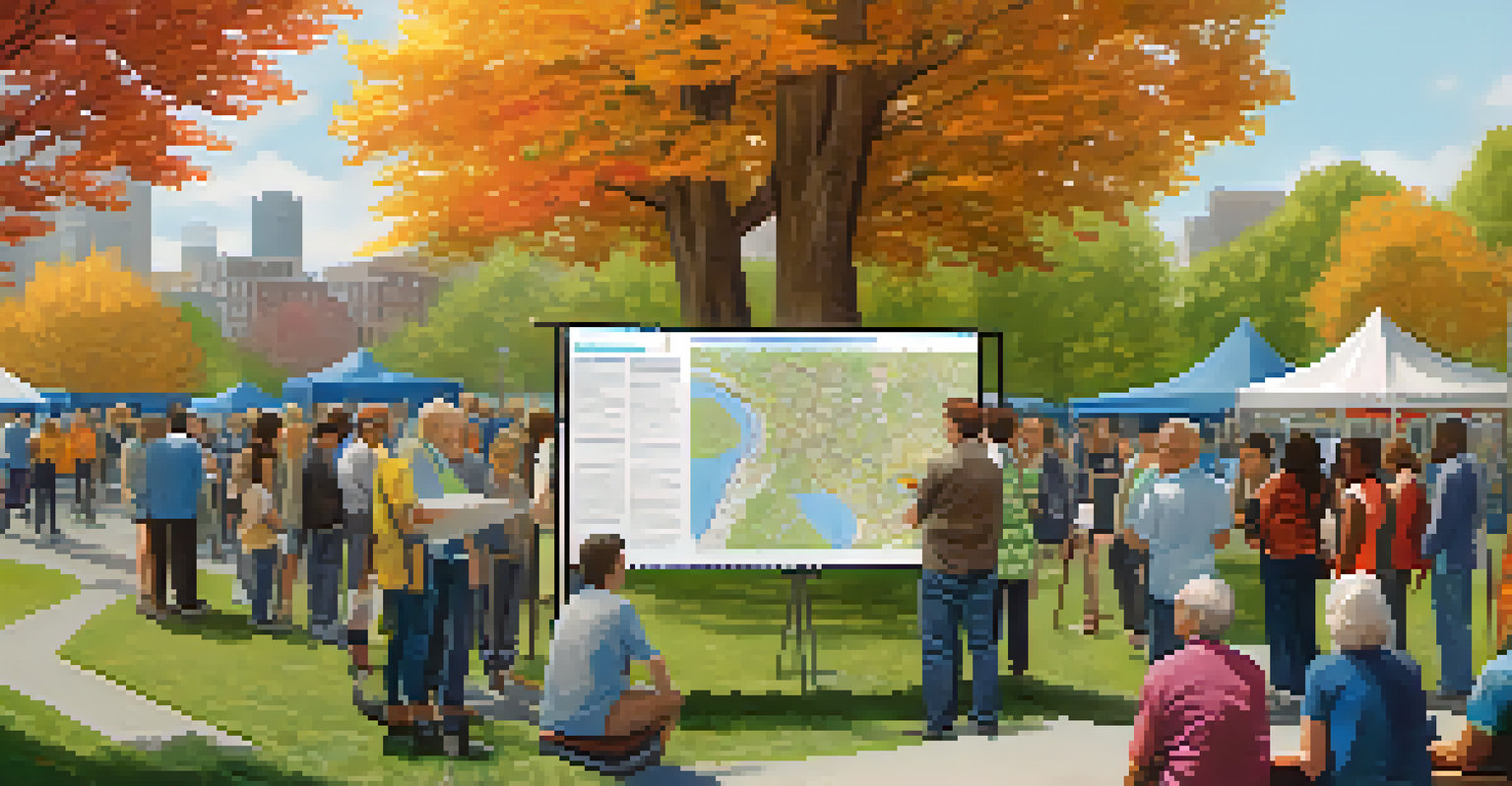The Role of Buses in California's Urban Mobility Solutions

Buses as Essential Components of Urban Mobility
Buses play a critical role in California's urban mobility landscape, acting as the backbone of public transportation. They provide an affordable and efficient means of travel for millions, helping to reduce congestion on the roads. With California's growing population, the need for reliable public transit options has never been more crucial.
Public transport is the lifeblood of a city, connecting people and places, and unlocking potential for communities.
These vehicles connect various neighborhoods, ensuring that residents can access jobs, schools, and essential services. Unlike personal vehicles, buses can carry many passengers at once, which means fewer cars on the road and less traffic overall. This collective approach not only saves time but also enhances the overall quality of urban life.
Furthermore, buses contribute to social equity by making transportation accessible to all, including those who cannot afford a car. This inclusivity is vital in diverse urban settings, where different communities must connect and thrive together. As California continues to evolve, the role of buses remains pivotal in shaping its urban mobility solutions.
Environmental Benefits of Bus Transportation
One of the most significant advantages of bus transportation is its potential to reduce greenhouse gas emissions. By encouraging the use of public transit over personal vehicles, buses help minimize the carbon footprint of urban travel. This is particularly important in California, where air quality is a pressing concern.

Buses are often designed to be more energy-efficient than individual cars, especially newer models that run on clean energy sources. For instance, electric buses are becoming increasingly popular, offering a quieter and greener alternative to traditional diesel buses. This shift is a step towards a more sustainable urban environment.
Buses Enhance Urban Connectivity
Buses serve as a vital public transportation option, connecting neighborhoods and providing access to jobs and services.
Moreover, increased bus ridership can lead to less urban sprawl, as public transport hubs can revitalize neighborhoods and encourage compact living. By promoting a culture of public transit use, California can move closer to its environmental goals while ensuring that its cities remain livable and vibrant.
Technological Innovations in Bus Systems
California's bus systems are embracing technology to improve service and efficiency. Innovations like real-time tracking apps allow riders to monitor bus locations, reducing wait times and enhancing the overall travel experience. This tech-savvy approach helps build trust in public transportation.
The best way to predict the future is to create it.
Additionally, the integration of smart card systems simplifies fare payments, making it easier for riders to hop on and off as needed. These advancements not only streamline operations but also attract a younger demographic that values convenience and efficiency. As technology continues to evolve, so will the capabilities of bus systems.
The use of data analytics also plays a significant role in optimizing routes and schedules based on passenger demand. By analyzing travel patterns, transit authorities can make informed decisions that enhance service delivery. This commitment to innovation is crucial for keeping California's urban mobility solutions relevant and effective.
Challenges Facing California's Bus Systems
Despite their many benefits, California's bus systems face several challenges that hinder their effectiveness. One major issue is funding, as many transit agencies struggle to secure adequate financial resources for maintenance and expansion. This can lead to service cuts and reduced frequency, ultimately discouraging ridership.
Additionally, traffic congestion remains a persistent problem, affecting bus schedules and reliability. Buses can often get stuck in the same gridlock as private vehicles, leading to longer travel times and frustrated passengers. Solutions like dedicated bus lanes are being explored, but implementation can be complex and contentious.
Environmental Benefits of Buses
Buses significantly reduce greenhouse gas emissions by encouraging public transit use over personal vehicles, supporting California's sustainability goals.
Finally, public perception plays a significant role in the success of bus systems. Some individuals may view buses as less desirable compared to personal vehicles, impacting ridership numbers. Overcoming these perceptions requires ongoing community engagement and education about the benefits of using public transportation.
The Impact of COVID-19 on Bus Services
The COVID-19 pandemic significantly impacted public transportation, including bus services across California. Initial lockdowns led to a dramatic decline in ridership, forcing transit agencies to reevaluate their operations and safety protocols. Many implemented measures such as enhanced cleaning and social distancing to protect passengers and staff.
As the state begins to recover, transit agencies are working to rebuild trust and encourage ridership once again. Promoting the safety measures put in place, along with flexible travel options, is essential for attracting those who may still be hesitant to use public transport. Community outreach and communication will play a key role in this effort.
Furthermore, the pandemic has sparked discussions about reimagining urban mobility. As remote work becomes more common, the need for traditional bus routes may shift, prompting agencies to adapt their services to meet changing demands. This period of transformation could lead to innovative solutions that enhance California's urban mobility.
Community Engagement in Bus Planning
Community engagement is crucial in shaping effective bus services that meet the needs of residents. Involving the public in planning processes allows transit agencies to gather valuable feedback on routes, schedules, and service quality. This participatory approach fosters a sense of ownership among community members.
Regular public meetings, surveys, and outreach initiatives can help transit authorities understand the specific needs and preferences of different neighborhoods. By actively listening to residents, agencies can make informed decisions that reflect the community's priorities. This not only enhances service but also builds trust between transit authorities and the public.
Community Engagement is Key
Involving the community in bus planning processes ensures services meet local needs and fosters trust between transit authorities and residents.
Moreover, engaging with local organizations can amplify outreach efforts and ensure that diverse voices are heard. Collaborative partnerships can help address barriers to bus usage, such as accessibility concerns or cultural perceptions. By promoting inclusivity, California can create a bus system that serves everyone effectively.
Future of Buses in California's Urban Mobility Ecosystem
The future of buses in California looks promising as cities continue to prioritize sustainable urban mobility. With ongoing investments in electric buses and enhanced infrastructure, the state is positioning itself as a leader in public transportation innovation. This aligns with broader goals of reducing emissions and improving air quality.
Furthermore, the integration of buses with other modes of transportation, such as biking and ridesharing, will create a more cohesive mobility ecosystem. Multimodal transit options can provide riders with seamless travel experiences, making it easier to navigate urban landscapes. This interconnectedness is essential for attracting more users to public transit.

Ultimately, the success of California's bus systems will depend on their ability to adapt and evolve alongside changing urban dynamics. By prioritizing community needs, leveraging technology, and remaining committed to sustainability, buses can continue to play a vital role in shaping the state's urban mobility solutions for years to come.